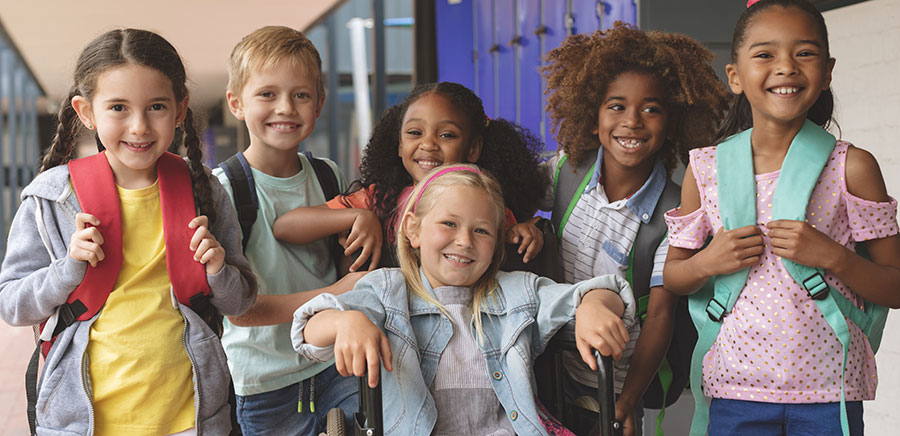Our Values

As IRIS Center staff, parents, educators, and members of our communities, we believe strongly in inclusion and acceptance, social justice, and equity for all people. We use this space to make available a record of our center’s values and public statements.
 At the core of our values is a commitment to the equity, accessibility, and diversity that defines our community and mission.
At the core of our values is a commitment to the equity, accessibility, and diversity that defines our community and mission.
The IRIS Center takes seriously our commitment to a diversity of opinion, perspective, and experience. Whether this be cultural and linguistic diversity, socioeconomic diversity, or the endless diversity of individual strengths and personhood, we strive—and will always strive—to embrace and celebrate the things that make us unique as well as those that we share in common. We do so as writers, educators, researchers, parents, and people who hope to do our small part to build a more just and equitable world for all our children. Indeed, it was our prior work on issues of racial equity that inspired two of us to consider moving out of our comfortable special education niche and into work that would reach a much larger audience in order to improve teachers’ awareness of cultural and linguistic differences, increase the use of evidence-based practices, and prevent inappropriate referrals of students of color to special education. That desire eventually led to the work of IRIS.
We invite your commentary and feedback. If you notice anything in an IRIS resource of which you believe we should be made aware, do not hesitate to contact us at [email protected]. Thank you as always for supporting the IRIS Center and our mission.
 In the wake of the violence at the U.S. Capitol on January 6, 2021, the IRIS Center issued this statement focusing on resources to help parents and teachers guide conversations with their children and students.
In the wake of the violence at the U.S. Capitol on January 6, 2021, the IRIS Center issued this statement focusing on resources to help parents and teachers guide conversations with their children and students.
As we continue to come to grips with the events of January 6, 2021, many of our most acute concerns have turned to children and students. Even for grown people, the images broadcast live from Capitol Hill were shocking and frightening. For young children, many of whom lack the tools to contextualize upsetting events and emotions, these effects can be greatly magnified. Some children may believe that their family members or even they themselves are in danger. More, they might or might not share these fears with their parents or teachers.
Speaking to children in an honest, age-appropriate, and calming manner can help to assuage at least some of these anxieties. In this spirit, we offer the resources below in the hope that they might help to facilitate and guide these difficult but necessary conversations.
Throughout this difficult moment, the IRIS Center continues to believe that the attainment of a better, more honest, more just, and more equitable society is within our reach. We strive to attain this goal—sometimes in fits and starts, sometimes even taking steps backward—through efforts grounded in mutual respect and acceptance, a commitment to truth and facts, and an enduring belief in our responsibility to create a better world for our children.
ADL Education, “Discussing Political Violence and Extremism with Young People” https://www.sutori.com/story/discussing-political-violence-and-extremism-with-young-people–3tm3oXLqgApFvjqTx32nG5vE
ASCD, “Resources for talking to students about politics, civic engagement, and uncertainty” https://inservice.ascd.org/resources-for-talking-to-students-about-politics-civic-engagement-and-uncertainty/
Common Sense Media, “Talking to Kids About the Violence at the U.S. Capitol” https://www.commonsensemedia.org/blog/talking-to-kids-about-the-violence-at-the-us-capitol
Education Week, “How To Teach the U.S. Capitol Attack: Dozens of Resources To Get You Started” https://www.edweek.org/teaching-learning/how-to-teach-the-u-s-capitol-attack-dozens-of-resources-to-get-you-started/2021/01
Facing History and Ourselves, “Responding to the Insurrection at the U.S. Capitol” https://www.facinghistory.org/educator-resources/current-events/responding-insurrection-us-capitol#.X_882Rb9Rz0.link
National Association of School Psychologists, “Talking to Children About Violence: Tips for Parents and Teachers” https://www.nasponline.org/resources-and-publications/resources-and-podcasts/school-climate-safety-and-crisis/school-violence-resources/talking-to-children-about-violence-tips-for-parents-and-teachers
National Geographic, “How to talk to your kids about the chaos at the Capitol” https://www.nationalgeographic.com/family/2021/01/talking-to-your-kids-about-chaos/
Teaching Tolerance, “Leading Conversations After Crisis” https://www.tolerance.org/magazine/leading-conversations-after-crisis
 Following the killing of George Floyd, the IRIS Center issued this statement in support of racial justice and the Black Lives Matter movement.
Following the killing of George Floyd, the IRIS Center issued this statement in support of racial justice and the Black Lives Matter movement.
There are times when it is difficult to know what to say, when words feel like they are not, and cannot, be enough. This is one of those times, and we are struggling with it, just as we suspect many of you are struggling with it.
Some of you out there right now might be teaching virtual classes, or preparing to do so. You might want to talk to your students about the Black Lives Matter movement and the protests that are now taking place across the United States and, indeed, around much of the world. Maybe your students have raised questions. These can be difficult conversations. They can be painful. But they are necessary, and they should be conducted with honesty and courage and openness. In this spirit, we want to share what we think might be some resources to help you get started.
The Smithsonian National Museum of African American History & Culture offers tools and resources to help guide productive and meaningful conversations about race.
The National Education Association, too, has resources for teaching about Black Lives Matter, including lesson plans, activities, and teaching guides.
The IRIS Center supports, has always supported, and will never stop supporting the fundamental human right to the best possible education as an indispensable component in the development of an enlightened, tolerant, and engaged community. Today’s students are tomorrow’s leaders. They are tomorrow’s mayors and governors. They are tomorrow’s police officers. They are tomorrow’s teachers.
It’s up to us–to all of us–to help them along a path toward a more compassionate and just society.

Following the shootings in Atlanta, Georgia, on March 16, the IRIS Center issued this statement that included resources with which to guide discussions with children and students about discrimination and the AAPI community.
The March 16 shootings of eight people in Atlanta, Georgia–six of whom were Asian women–stand as a stark reminder of the work that remains to be done to address violence and prejudice in our communities. That these crimes took place within the context of a shocking increase in violence against Asian Americans serves only to cast the urgency of the current moment into even sharper relief. A report issued by Stop AAPI Hate covering March 2020 to February 2021 documented nearly 3,800 incidents of violence and discrimination targeting Asian Americans, a number representing “only a fraction of the number of hate incidents that actually occur.”
In moments like these, it’s normal for children to have questions or even to experience fears that they may or may not express. As always, teachers and parents play a fundamental role in addressing these issues. One of the first steps is exposure to and understanding of other people and cultures; an easy way to introduce this is through literature. We include links here to several book selections curated by Social Justice Books, a Teaching for Change project. These selections include texts for early childhood, upper elementary, young adult, and adult age groups. Social Justice Books offers more than 70 carefully selected book lists on many areas of focus, including:
Asian Americans and Asia
Chinese Americans
Japan and Japanese Americans
South Asian
In addition to those above, we encourage you to explore their other topic areas for materials to add to your home and classroom libraries. We’ve also included a few further resources below that we hope teachers and parents might useful in guiding conversations with their students and children.
The IRIS Center stands as ever with our friends, families, neighbors, and communities against discrimination and violence. We will continue to do our part as together we advance toward a more just and equitable society grounded in mutual respect, dignity, and the celebration of our differences.
Resources
Khan Academy:
Resources for parents and teachers to #StopAsianHate: Read, Watch, Do
Learning for Justice:
After Atlanta: Teaching About Asian American Identity and History
Responding To Anti-Asian Violence and Georgia shootings
National Geographic:
Talking To Kids About Xenophobia
Diversifying Your Home Library Can Help You Raise an Anti-Racist Child
Smithsonian Asian Pacific American Center:
Daily News Lesson: Asian Americans Face a Wave of Discrimination During the Pandemic
We Are Not a Stereotype: Breaking Down Asian Pacific American Bias

Following the shootings at Robb Elementary School on May 24, 2022, the IRIS Center issued this statement that included resources with which to guide age-appropriate discussions with children and students about school shootings.
Like so many of you, we are still struggling to process the senseless loss of life in Uvalde, TX. In addition to coping with grief and anguish, educators across the country are now reevaluating their safety protocols and running through countless unfathomable scenarios in their heads. For many children and teens, the classrooms and hallways where they spend their days may now feel unsafe. And, coming on the heels of mass shootings in Buffalo, NY and Laguna Hills, CA, other familiar places like grocery stores and churches might feel unsafe as well.
Many of our young people were grappling with mental health issues prior to these events—76% of schools reported an increase in staff concerns about students exhibiting symptoms of depression, anxiety, and trauma since the start of the pandemic. And the educators who are the first to support these students were themselves facing stress, exhaustion and burnout, even as schools increased their efforts to address their staff’s mental health needs.
And now this.
Honest, age-appropriate, and calm discussions are the first step to helping students cope with their fears and anxieties. Whether you are already talking with your students, will begin conversations across the upcoming days or weeks, or have been unable to have them at all because you’re still struggling with your own emotions, we offer the resources below, for whenever you’re ready, in the hope that you find them helpful.
During such difficult times, the IRIS Center continues to believe that a better, safer, kinder, and more equitable society is possible. The path before us may be harder than we anticipated. We may struggle, we may stumble, we may even fall. Yet we will keep getting up, we will keep moving forward. And day by day our faltering steps will become a little steadier, a little stronger, so that we can fulfill our commitment to creating a better world for our children.
Resources
American School Counselor Association, “Helping Students After a School Shooting”
ASCD, “Guiding Students and Families Through Grief”
Center on Positive Behavioral Intervention and Supports, “Supporting Schools During and After Crisis”
Coalition to Support Grieving Students, Grief Support Modules for School Personnel
Learning for Justice, “Navigating Discussions Following a School Shooting”
National Association of School Psychologists, “Talking to Children About Violence: Tips for Parents and Teachers”
National Center for School Crisis and Bereavement, “Talking to Children About Terrorist Attacks and School and Community Shootings in the News”
National Child Traumatic Stress Network, “Parent Guidelines for Helping Youth After the Recent Shooting,” and “Age-Related Reactions to a Traumatic Event”
National Geographic, “When Upsetting Current Events Shake Kids’ Worlds”
The New York Times, “An Age-by-Age Guide to Talking to Children About Mass Shootings”
Understood, “ Having Hard but Necessary Conversations”
U.S. Dept. of Health and Human Services’ Substance Abuse and Mental Health Services Administration, “Coping Tips for Traumatic Events and Disasters,” and “Incidents of Mass Violence”